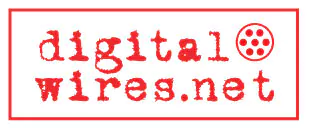Creating an effective email marketing strategy gets trickier than ever. With inboxes getting flooded daily, you’ve got to stand out if you want people to actually open and engage with your emails. So, how do you cut through the noise?
We’ve rounded up seven best practices to help you build a strategy that connects with your audience, drives action, and delivers results. Let’s dive in and make sure your emails don’t end up in the trash.
Create Audience Segmentation
One key to email marketing is segmentation. This strategy helps you “talk” directly to your targeted audience. Segmentation also means customizing emails based on audiences’ needs or preferences to increase engagement and open rates.
Email segmentation is pretty simple, especially since there are email tools you can use to help you do it. First, gather data on your subscribers. Use tools like surveys, sign-up forms, and website analytics to identify their preferences and behaviors.
You can segment your audiences based on these aspects:
- Demographics: Tailor offers or content based on age, gender, or location.
- Purchase behavior: Send personalized product recommendations based on previous purchases or items they’ve browsed.
- Engagement: Identify loyal customers and re-engage those who haven’t opened your emails in a while.
- Lifecycle stage: New subscribers may need an introductory email series, while longtime customers could benefit from loyalty rewards or exclusive offers.
Craft Compelling Subject Lines
A subject line is the first impression of your email. If you craft it compellingly, you may drive higher open rates. However, if it isn’t eye-catching or doesn’t offer value, your email might end up in the trash—or worse, marked as spam.
Too long subject lines get cut off, especially on mobile devices. Keep it short and aim for 40-50 characters or less. You can create urgency and use powerful words like “exclusive,” “free,” or “new” to entice readers.
Use personalization when possible–for example, including the recipient’s name or relevant information based on their preferences can make the subject line feel more exclusive. But, be careful with words that trigger spam filters (e.g., “buy now” or excessive punctuation).
Deliver Value with Every Email
No one loves overly promotional emails. If your emails don’t consistently provide value, they’ll quickly unsubscribe or stop engaging with your messages. Every email you send should provide something valuable to your subscribers.
You can think about what your subscribers would genuinely appreciate, such as tips, how-tos, or exclusive insights. When your emails offer real benefits, readers will be more likely to open up and engage with them.
Other values you can send to them are exclusive discounts, first access to sales, or insider news. Making your brand a source of valuable information can build loyalty and strengthen the relationship between your brand and your audience.
Personalize Your Content
People are more likely to engage with content that speaks directly to their interests. Personalizing your email content means tailoring it to individual subscribers. Your email segmentation is crucial to creating personalization.
This strategy goes beyond just addressing them by name. You should analyze their data, behaviors, and purchasing history. Invest in email tools that can help you send automated emails based on actions the subscriber has taken.
For example, a furniture company, Multimo can send personalized emails recommending new arrivals for its subscribers. You can also send valuable infographics or motion graphics about products that are relevant to them.
Include Clear Call-To-Actions (CTAs)
Without a clear CTA in your email, you might miss the opportunity to drive conversions or generate sales. A CTA directs your readers to take the next step, so it needs to be clear, actionable, and enticing.
It’s recommended to use a visual button to convey your CTA. Visualizing your CTA helps it stand out more, helping readers to find it easily. If relevant, create urgency with a limited offer to encourage immediate action.
Avoid using a weak CTA like “Click Here.” Instead, use a stronger one like “Get 30% Off Your Next Order—Shop Now!” This will drive value and create a sense of urgency.
Send Emails at the Best Time
Timing is everything. Even the most compelling email can fall flat if sent at the wrong time. Sending an email when your subscribers are active can significantly increase open and engagement rates.
For B2B companies, weekday mornings may work best, while B2C brands might see better results in the evening or on weekends. If your email list consists mostly of working professionals, send emails early in the morning or during lunchtime on weekdays.
However, if your audience is global, segment your list based on geographic location and schedule emails accordingly.
Optimize for Mobile Users
Most of the emails are accessed on mobile devices. Thus, designing your emails to be mobile-friendly is essential. Mobile optimization ensures your content looks great and functions properly, even on smaller screens.
You can use responsive email templates that automatically adjust to fit any screen size. Make sure images resize properly and that your text remains readable on smaller screens. Also, keep your content brief and to the point.
Takeaway
If you want your email game to be strong, focus on the above tips, such as segmenting your audience, personalizing your content, and throwing in clear CTAs. Also, keep your subject lines snappy and make sure everything’s mobile-friendly.
Don’t forget to test and analyze everything. A/B tests different send times, designs, and wording to see what hits. Also, don’t spam—find that sweet spot between too much and too little. Stay fresh in their inbox without being annoying.
Author Bio

Andre Oentoro is the founder of Breadnbeyond, an award-winning animation video company. He helps businesses increase conversion rates, close more sales, and get positive ROI from explainer videos (in that order).
Photo by Glenn Carstens-Peters on Unsplash


